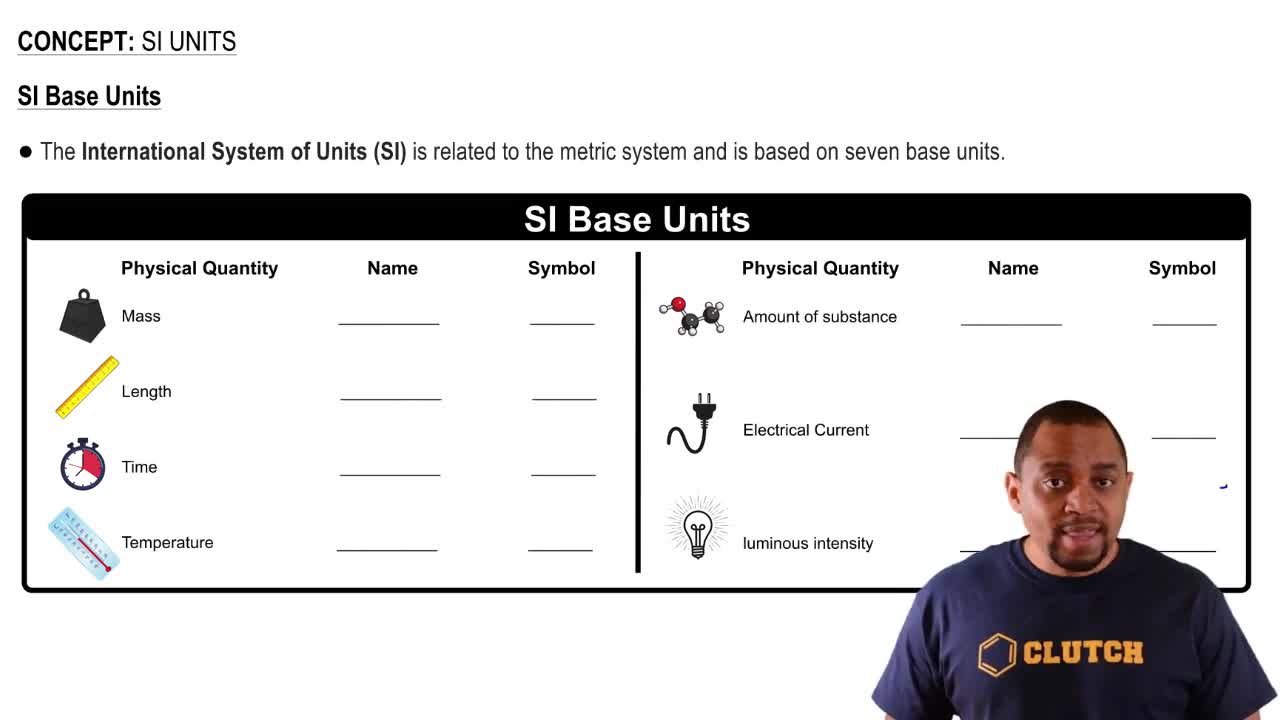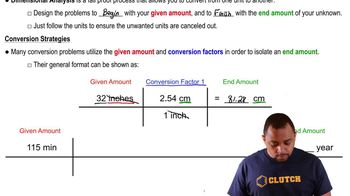Here are the essential concepts you must grasp in order to answer the question correctly.
Energy Units
Energy can be measured in various units, with the joule (J) being the standard SI unit. Other common units include kilojoules (kJ) and millijoules (mJ), where 1 kJ equals 1,000 J and 1 mJ equals 0.001 J. Understanding these conversions is essential for accurately completing the table.
Recommended video:
Unit Conversion
Unit conversion involves changing a quantity expressed in one unit to another unit. This process requires knowledge of conversion factors, such as knowing that to convert kJ to J, you multiply by 1,000, and to convert J to mJ, you multiply by 1,000. Mastery of these conversions is crucial for solving problems involving energy.
Recommended video:
Dimensional Analysis
Dimensional analysis is a mathematical technique used to convert one set of units to another. It involves multiplying by conversion factors that equal one, ensuring that the units cancel appropriately. This method is particularly useful in chemistry for ensuring that calculations involving different units yield correct results.
Recommended video:

 Verified step by step guidance
Verified step by step guidance


